
Zheng-Zhe Lin
Associate Professor
School of Physics
Subject: Condensed Matter Physics
Research directions:
2D topological states and interfaces
Theory of 2D materials
Email: zzlin@xidian.edu.cn
EDUCATION
2002-2006, Department of Chemistry, Fudan University, B. S. in Chemistry
2006-2012, Institute of Modern Physics, Fudan University, Ph.D. in Physics
EMPLOYMENT
2012-present, Lecturer, Xidian University
2015-present, Associate Professor, Xidian University
RESEARCH INTERESTS
1. First principles calculation
2. 2D materials
3. The theory of thermodynamic stability of nanodevices
4. Theoretical design of 2D nano devices
Phys. Chem. Chem. Phys. 24, 18600-18607 (2022).
In recent years, the concept of topological catalysis has been proposed. The high density of topological surface states can be used to realize catalysis. TbMn6Sn6 is a Chern ferromagnet with spin-polarized Dirac band. In this study, the thermodynamic stability of TbMn6Sn6 surfaces is analyzed, and the paths of CO2 reduction are investigated.
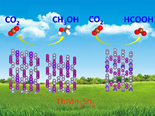
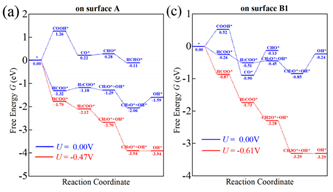
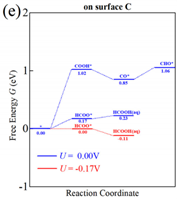
Spin filtering of graphene-MnBi2Te4 transverse heterojunction
Nanotechnology 33, 325201 (2022).
The development of two dimensional magnetic semiconductors has promoted the research of nonvolatile control of magnetic electric nanodevices. In this study, we investigate the electron transport properties of graphene and ferromagnetic topological material MnBi2Te4, and find that the transverse graphene-MnBi2Te4 have good ohmic contact, which is conducive to the application of all-carbon circuits. The high spin polarization of the magnetic tunnel junction can achieve good spin filtering in two dimensions.
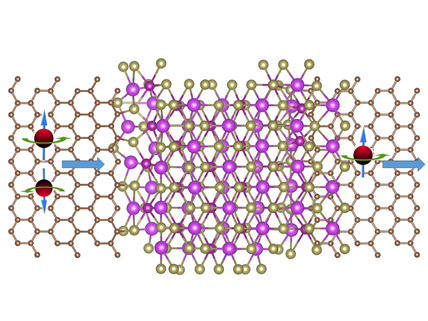
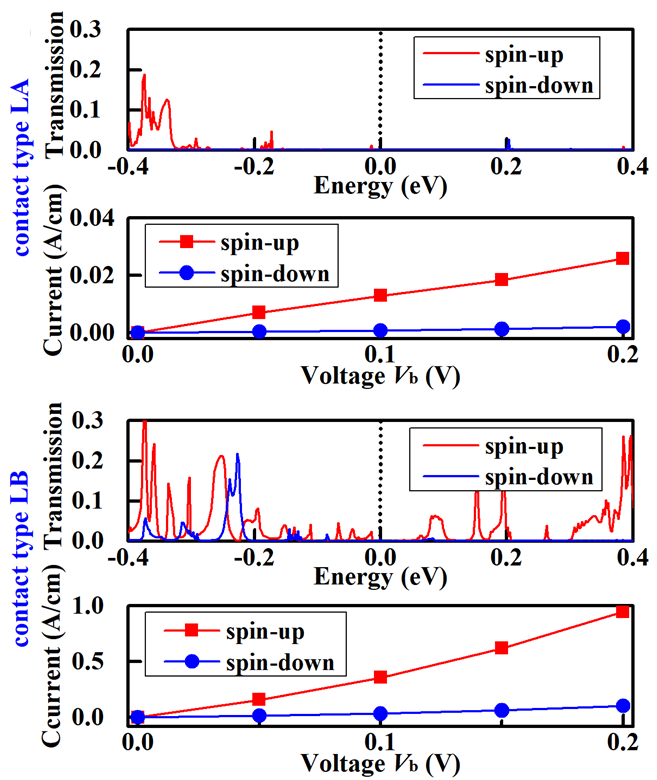
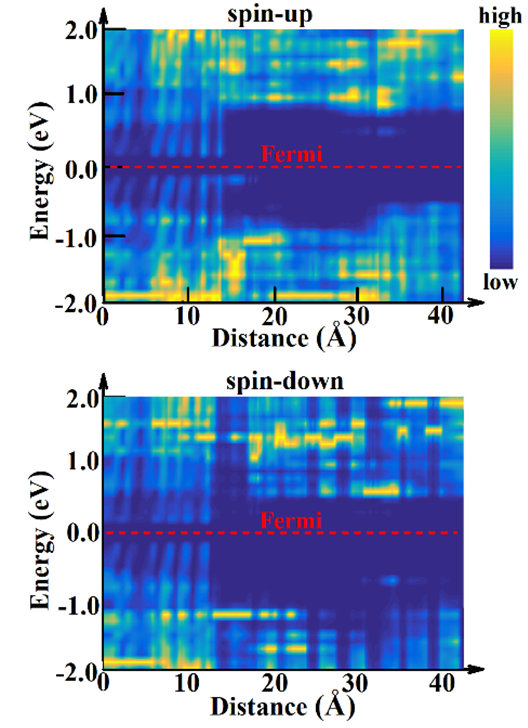
Defect-free functionalization of 2D MoS2 as catalyst for CO2 reduction
Phys. Chem. Chem. Phys. 24, 3733-3740 (2022).
Pinning of metal atoms on solid surfaces usually depends on adsorption of defects. However, structural defects tend to limit electronic properties. In this study, we investigated defect-free functionalization of IrX3 (X = F or Cl) on two-dimensional MoS2 monolayer as a low overpotential CO2 reduction catalyst.
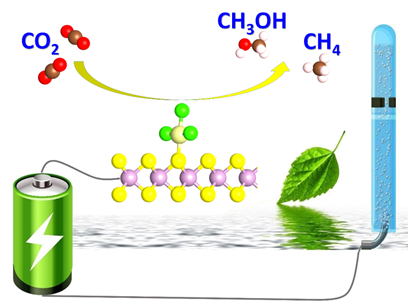

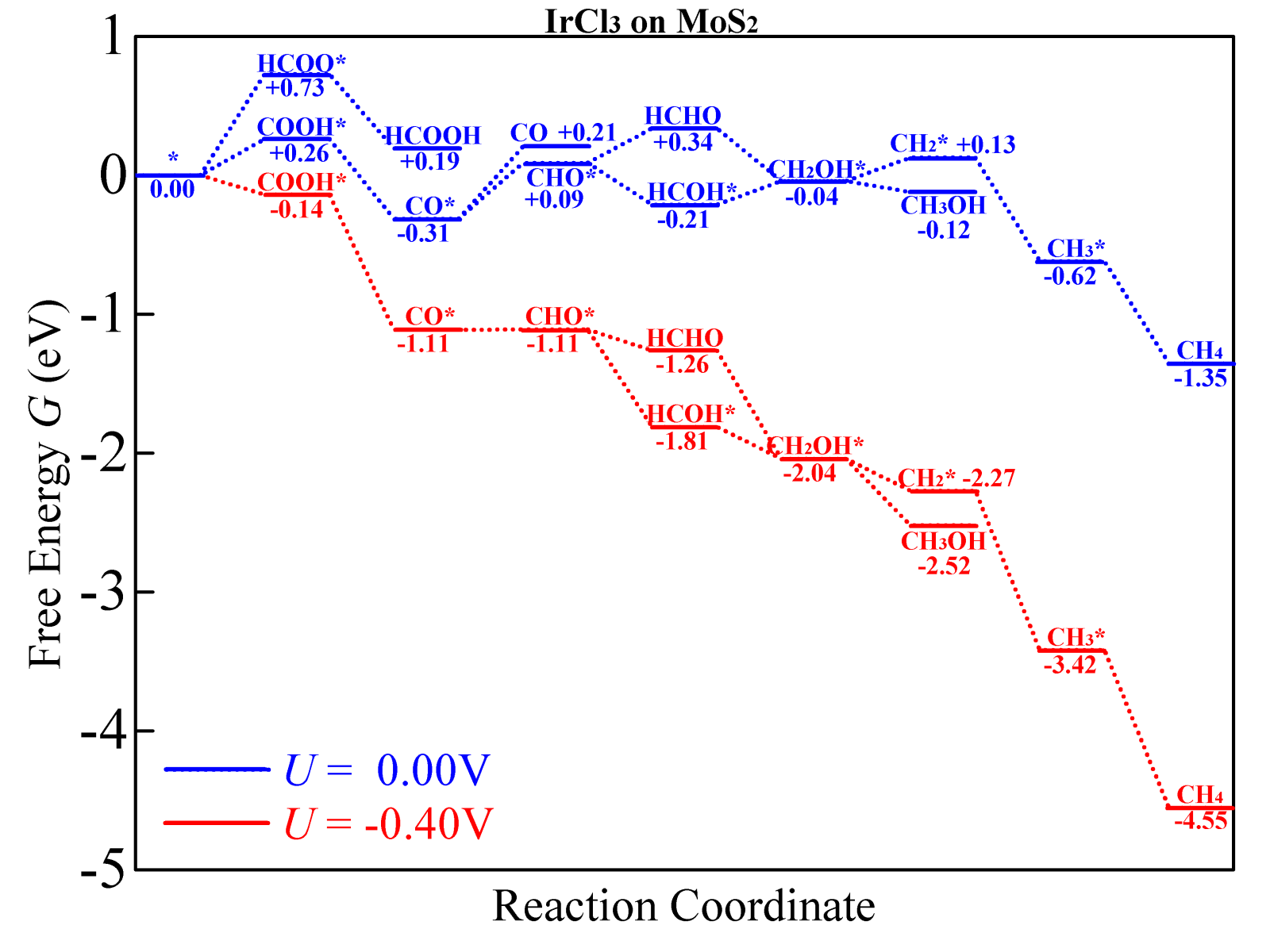

Study on the possibility of T-carbon serving as Li storage material and Li battery anode
Mat. Adv. 2, 4694-4701 (2021).
T-carbon is a newly discovered diamond-like phase with an acetylene-bond supported hollow structure.
The possibility of T-carbon serving as a high-capacity Li storage material and a Li battery anode is investigated.
We discussed the lithium adsorption in low and high density and the change of anode potential between different phases.
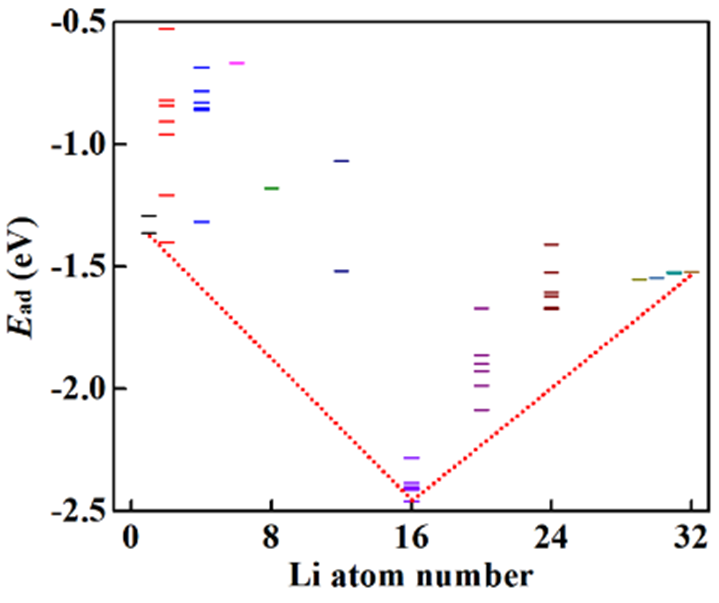
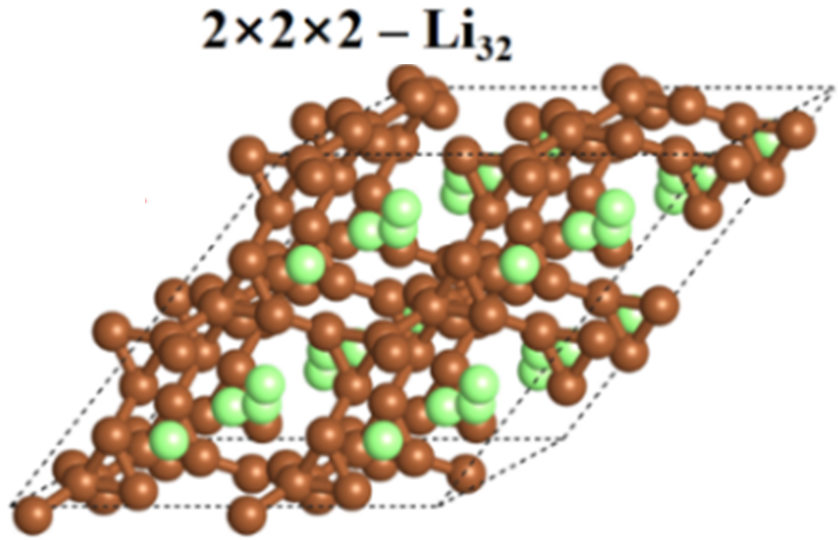
Study on stability and exchange mechanism of 2D magnetic ionic-crystal semiconductors
Phys. Lett. A 395, 127229 (2021).
Because of the isotropy of ionic bonds, the existence of 2D ionic crystals is a basic physical question.
The existence of 2D magnetic rare-earth ionic crystal EuS is then studied along with the exchange interactions.
The 4f-5d third-order dynamic transition for transferring exchange interactions between Eu2+ is analyzed.
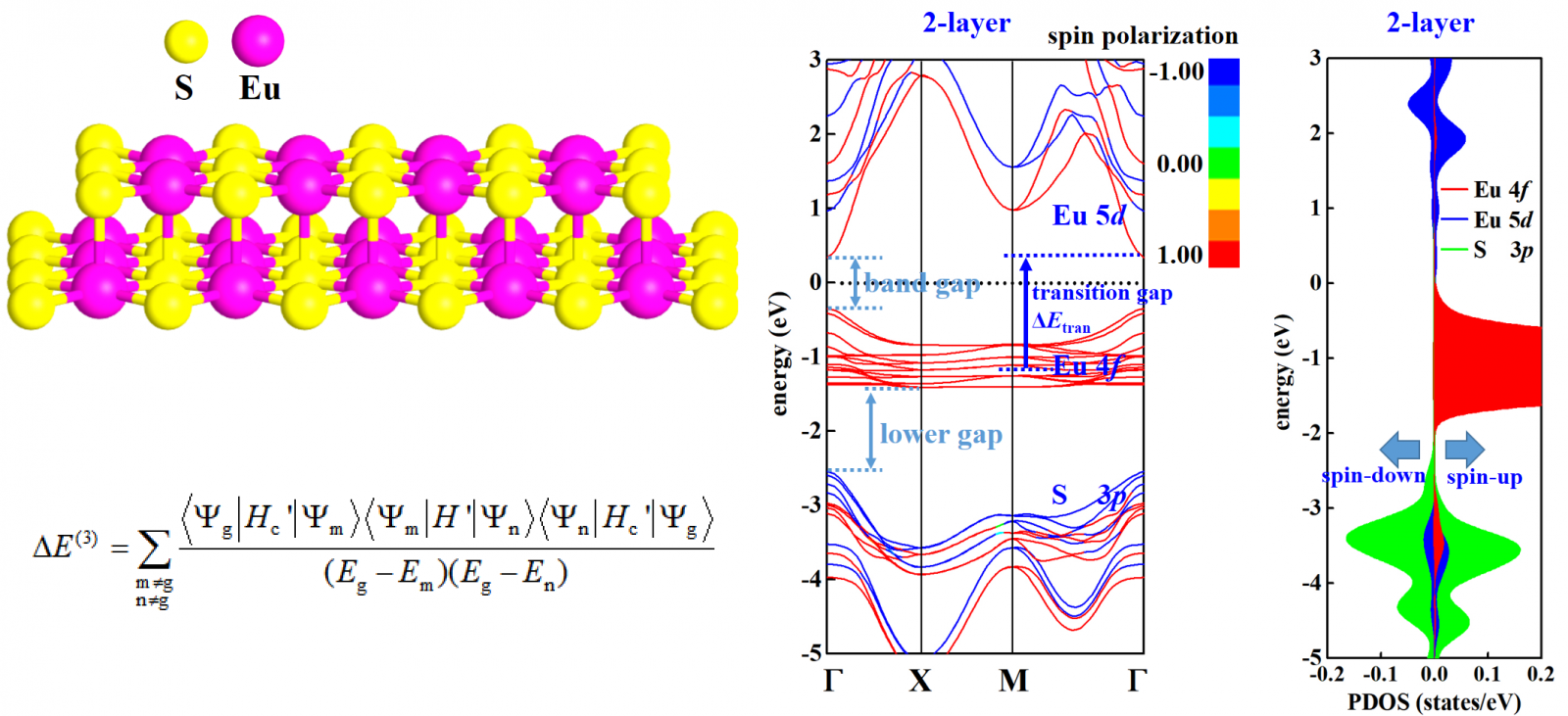
Effective mass control of Dirac fermions in kagome lattice Phys. Status Solidi RRL 14, 1900705 (2020).
Kagome lattice carries Dirac electronic states and leads to topological Chern insulating phase.
We study the Dirac states in Fe3Sn2 and clarified the relationship between spin-orbit coupling and effective mass.
The origin of the new physics in the spin-polarized Dirac systems was revealed.
A method to control the effective mass of Dirac electrons was proposed.
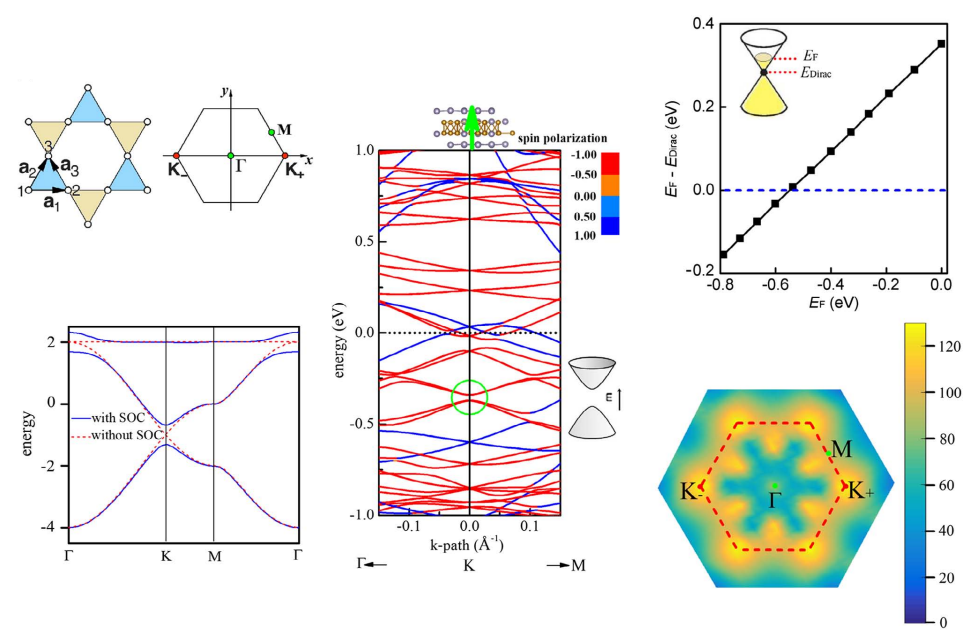
Theoretical study of 2D Fe3GeTe2 magnetic tunnel junction and spin filter Adv. Elec. Mat. 6, 1900968 (2020).
By the non-equilibrium Green\\\'s function theory, we predicted that the spin polarization of ballistic transport through single/double layer Fe3GeTe2 is 53/85%.
In the ultra-thin Fe3GeTe2-hBN-Fe3GeTe2 heterostructure, significant magnetoresistance was observed.
For single-layer/double-layer Fe3GeTe2 heterojunction, the magnetoresistance reaches 183/252%.

Study on the 2D-confined CO2 reduction under graphene and graphene covers
Int. J. Energ. Res. 44, 784 (2020). Appl. Surf. Sci. 479, 685 (2019).
Quantum confinement of 2D covers on metal surfaces could change the potential energy surfaces and the reaction barriers.
The heterogeneous catalysis ability of the metal surfaces is then improved.
The mechanism of CO2 reduction and the key physical factors determining the catalytic ability are summarized.








